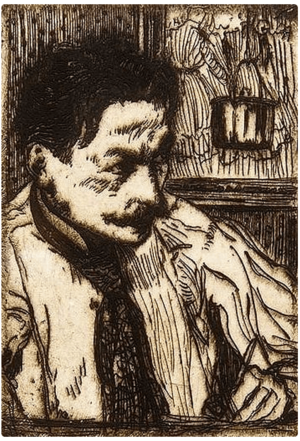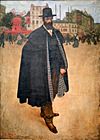Henri Evenepoel facts for kids
Henri Evenepoel (born October 3, 1872, in Nice, France – died December 27, 1899, in Paris, France) was a talented Belgian artist. His most important artworks are known for their bold colors, which were similar to a style called Fauvism.
Contents
Life and Art Career
Early Life and Art School
Henri Evenepoel began studying art in Brussels, Belgium, from 1889 to 1890. He attended the Académie Royale des Beaux-Arts. Later, in 1892, he moved to Paris, France, to study at the famous Ecole des Beaux-Arts. In 1893, Evenepoel joined the art studio (called an atelier) of Gustave Moreau. This is where he met other future famous artists like Henri Matisse, Georges Rouault, and Albert Marquet.
Exhibitions and Style
Evenepoel showed his first portrait, called Louise in Mourning, in 1894 at a big art show in Paris. He continued to show his paintings at other important exhibitions until he passed away. His first art show all by himself was in Brussels from December 1897 to January 1898.
Henri Evenepoel loved to paint his family and friends. His full-length portraits often had a plain background. These paintings showed the influence of artists like Édouard Manet and James Abbott McNeill Whistler. When he painted scenes of Paris, he was inspired by artists such as Henri de Toulouse-Lautrec.
Bold Colors and Later Years
At first, Evenepoel used darker colors in his paintings. However, his style changed a lot when he spent a winter in Algeria. His paintings from this time used very bright and bold colors. These colors were similar to the style of art known as Fauvism. An example of this is his painting Orange Market, Blidah. Sadly, Evenepoel died in Paris from typhus when he was 27 years old.
Representative Works
-
Orange Market, Blidah, 1898, Royal Museums of Fine Arts of Belgium.
-
L'Espagnole à Paris (portrait of the painter Francisco Iturrino), 1899, Museum of Fine Arts, Ghent.
See also
 In Spanish: Henri Evenepoel para niños
In Spanish: Henri Evenepoel para niños







